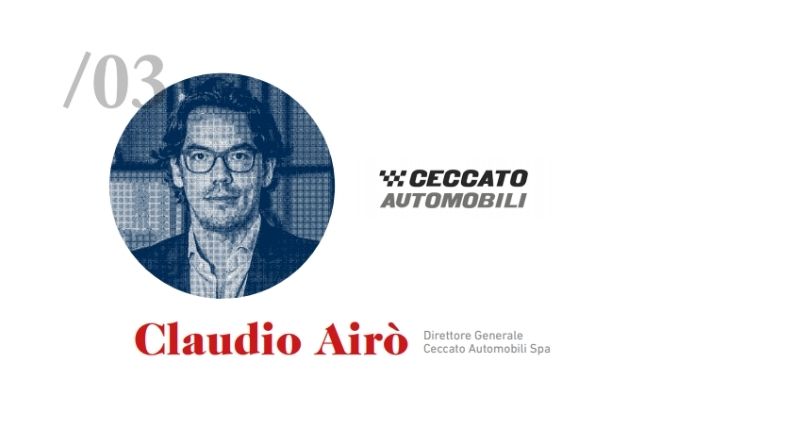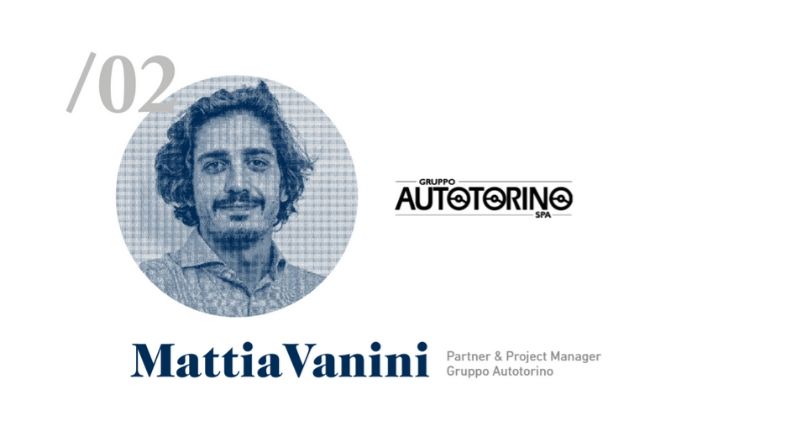- Mail:
- info@digital4pro.com
Automotive Industry: Claudio Airò, General Manager Ceccato Automobili Spa

C’è una guerra là fuori
22 Luglio 2020
Automotive: Claudio Airò, Direttore Generale Ceccato Automobili Spa
23 Luglio 2020What’s the scenario for car manufacturers and dealers in this phase of reopening of the markets?
It is a scenario where uncertainty is no longer just a risk factor – it has become the variable influencing the choices of all players. Consumers are scared there’s going to be another lockdown, or even that their lifestyle may be under threat, while others still may just be waiting for new incentives to be offered. As a result, dealers are struggling to make forecasts for what could happen in the market in the coming months. This is holding back investments and new projects, but there is also an acknowledgement that extraordinary refurbishment processes need to be started in order to confront a new scenario that could be definitive. The most frequent reaction, even from companies, is therefore that of waiting for more answers.
What impact will covid have on user behaviour for cars and on the resulting purchase behaviour?
At the moment there is no sign of any upheaval in terms of the way and how much cars are used, especially outside major cities and where business activities have fully resumed. Therefore, in the short term, with a full reboot of production activities, we are not expecting any radical changes in car user behaviour. On the other hand, purchase behaviour has changed, although, in many ways, more than a change it’s probably more accurate to call this an acceleration of trends that were already afoot. However, many situations people had been imagining at the early stage of the lockdown – when we were all gripped by fear – have not come about. The management of sanitisation and social distancing requirements has proven to be less dramatic than we had thought. As things stand, the predictions of empty showrooms abandoned by customers have been far from the mark.
Customers who are coming to showrooms seem to know what they want, they are more likely to make purchases, more determined and perhaps even more informed than they were before. They’re increasingly likely to want a “serious” appointment, rather than an impromptu visit. It has become essential for dealers to manage negotiations based on this new type of behaviour.
On the other hand, purchase behaviour has changed, although, in many ways, more than a change it’s probably more accurate to call this an acceleration of trends that were already afoot
What role will dealers need to have in this new situation?
Today, dealers must firstly ensure safe access to their services. It has also become a duty and a necessity for them to identify purchase solutions that are most consistent with the state of uncertainty affecting customers, by finally becoming a product factory that selects and offers the best proposals from the markets.
Dealers will also have to indulge requests for change by customers. There is a feeling that, even here, our sector is approaching this situation with the same poor propensity to change as in recent years. Other sectors, like distribution or estate agencies, are proving to be more dynamic. Unless there are express requests by customers, in many cases little is being done to promote a different approach that is based less on face-to-face meetings. The risk is that of missing out on opportunities by attempting to impose on customers approaches that do not correspond with their own preferences. The response to these new requests is the “definitive” professionalisation of sales and other resources.
How, as a result, is the use of marketing communication tools with end users changing?
With the collapse of off-line activities by consumers and an upsurge in online interaction, car manufacturers and dealers have reacted swiftly by using digital tools and introducing new online contact methods in an attempt to maintain relations with existing and potential customers. In this post-lockdown period the automotive industry has mainly used 3 communication approaches: the emotional approach, with the aim of reassuring and expressing their empathy, positivity and the desire to get things started again; the practical approach, for example with home collection and delivery, to allow customers to remain safely in their homes, or the online booking of interventions; online customer service.
On the sales side, applications were created for virtual visits to showrooms, live chats and home test drives.
From a financial perspective, the approach is an understanding/supportive one: many car manufacturers have created plans to allow payments in up to six months if purchasers lose their jobs in the current year because of COVID-19, or which allow for a first instalment in 2021, or even payments in instalments, with reduced charges during 2020.
The major challenge of communication is therefore that of attracting the attention of users, engaging them, conveying trust and accompanying them from the virtual sphere to the physical environment of the showrooms.
…the automotive industry has mainly used 3 communication approaches: the emotional approach, with the aim of reassuring and expressing their empathy, positivity and the desire to get things started again; the practical approach, for example with home collection and delivery, to allow customers to remain safely in their homes, or the online booking of interventions; online customer service.




